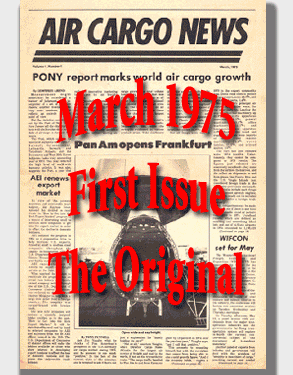
Regulatory changes effective
January 1st, 2015 may find automotive shippers unprepared. The roads in
North America as well as Western Europe have never been safer than now.
In Germany, the number of traffic-related deaths peaked in 1970 with 19,193
casualties, steadily declining to 3,340 in 2013.
This, despite the number of vehicles which
is steadily on the rise. Commercial traffic and especially commercial
transit truck traffic has more than quadrupled since then.
While in 1950 the total number of cars in
operation worldwide totaled about 53 million, in Germany alone 61.5 million
vehicles were registered in January 2014.
Safety in
Numbers
Based on the numbers, the steady decline
of traffic-related casualties may come as a surprise, in particular in
Germany, as it does not have a general speed limit on its prized Autobahnen.
Experts agree that the comparatively low
number of traffic-related tragedies is largely owed to steep improvements
in safety technology, slowly making way because of features available
at whopping premiums on luxury class automobiles to today’s law-mandated
standard features in compact and sub-compact cars.
Standard Equipment
These days, one will not find vehicles available
for commercial sale in North America or Europe without air bag systems,
seat belt pretensioners, and anti-lock braking systems, together with
other safety-related features.
Exploding
Technologies
Largely unbeknownst to the general public,
however, is the air bag and seat belt pretensioner technology that has
undergone considerable improvement, with developments having changed what
is actually shipped in the way of spare parts and assemblies.
By and large, what the layman might consider
an “airbag” or a “seat belt pretensioner” is rarely
shipped assembled. Instead, components containing quite minuscule amounts
of explosive material are shipped, and that has prompted the move toward
regulatory changes on the UN level.
In a nutshell, the small explosive charges
contained in seat belt pretensioners and airbags produce the amount of
gas required to fill the cushioning air bag in a fraction of a second
after impact, or tighten the seat belts immediately before such impact,
triggered by the braking forces.
New
Rules For 2015
The definitions in the UN Model regulations
18th edition, effective as of January 1st, 2015 state:
(a) Explosive
substance is a solid or liquid substance, which is in itself capable by
chemical reaction of producing gas at such a temperature and pressure
and such a speed as to cause damage to the surroundings.
(b) Pyrotechnic
substances are included even when they do not evolve gas.
(c) Pyrotechnic
substance is a substance or mixture of substances designed to produce
an effect by heat, light, sound, gas or smoke or a combination of these
as the result of non-detonative self-sustaining exothermic chemical reactions.
Presently, most airbags and seat belt pretensioners
are shipped either as UN 0503, Air bag modules or Air bag inflators or
Seat-belt-pretensioners when assigned to Class 1, explosives or as UN
3268 with identical proper shipping names when assigned to Class 9.
The difference between shipping as an explosive
in Class 1 (which with few exceptions requires transport on all-cargo
aircraft and is subject to additional requirements) and class 9 is basically
the packaging.
Where such explosive articles are packaged
in a way that any ignition or explosion of the device is limited to the
package itself, it may be shipped in class 9.
This requires the explosive article or device
to be confined in a steel cage and pass the so-called “UN bonfire
test.”
While most substances and devices may be
classified by the shipper himself, who ultimately bears the sole responsibility
for the correctness of such classification and the packaging, labeling,
marking, and documentation resulting thereof; articles and substances
in Class 1 require a governmental classification document.
Since explosive articles in class 9 are
really articles in class 1 whose hazards have been mitigated by a particular
packaging, both these articles and their UN-bonfire tested packagings
require governmental authorization.
What
Changes
With the 18th edition of the UN Model Regulations,
the proper shipping names Air bag modules, Air bag inflators, and Seat-belt-pretensioners
will be phased out.
These articles will then have to be assigned
either to UN 0431, Articles, pyrotechnic, for technical purposes in divisions
1.4.G and 1.4.S; UN 0503, Safety devices, pyrotechnic in division 1.4.G
or UN 3268, Safety devices, electrically initiated in class 9 where the
UN bonfire test requirements have been met.
In the maritime shipping mode, shippers
have a grace period of 12 months to implement regulatory changes and in
the European road transport mode they still have six months.
No
Grace Period for Air Cargo
The air mode, however, governed by the
ICAO Technical Instructions and the IATA Dangerous Goods Regulations,
requires full compliance without a grace period effective January 1st,
unless the regulations expressly grant such exceptional grace period,
which, as far as it is known now, has not been planned.
Time Is Running
Out
Since these articles and devices require
a governmental classification document and it is up to each national competent
authority to decide whether they just provide an updated document to holders
of such classification documents or require formal application by each
holder to re-classify these articles and devices in accordance with the
requirements mandated by the 18th edition of the UN Model regulations,
at least for the air mode the time allotted to shippers for implementing
these regulatory changes into their shipping process is starting to run
out.
Because both the UN number and the proper
shipping name indicated on the “Shipper’s declaration for
dangerous goods” must in practice match the information on the classification
document issued by the national competent authority, this could create
serious problems for some shippers—and actually also for consumers.
What to do?
Shippers, distributors, and manufacturers
of such devices should consult with their national competent authority
about what their take will be.
Some may take the pragmatic approach and
argue that since neither the UN-number nor the packaging requirements
or the hazard potential has changed, existing certifications remain valid.
Others may choose a more formal approach
and require reissuance of certification documents, saying that any mismatch
between the transport document and the competent authority certification
is not permissible, no matter the reason.
It remains to be seen whether manufacturers
and distributors will burden themselves with the hassles and costs associated
with the reclassification of older devices commonly found in older and
outdated conveyances for which commercial demand may be low and not warrant
the initial reclassification process.
Probably, in this case simple advice is
good advice: talk to the Dangerous Goods professional of the airline of
your choice beforehand, or if they do not have a DG specialist in their
local office, call the ground handling provider doing the DG handling
for this airline. Usually, they’re more involved in what local regulatory
requirements mean in the context of DG shipping and would prefer assisting
you in avoiding issues rather than holding your cargo.
Jens
|









